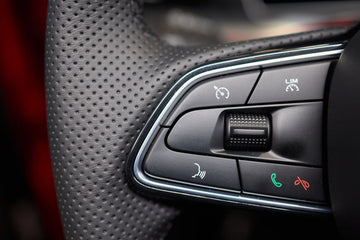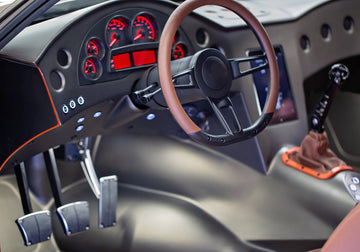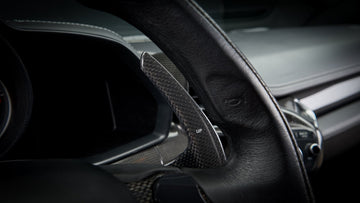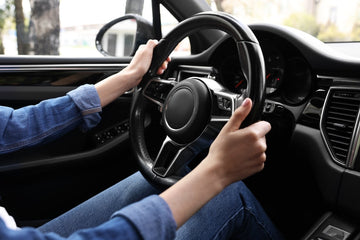When you slide into the driver’s seat of a new car, what’s the first thing you notice? The steering wheel. It’s the one part of a vehicle you interact with every single time you drive, but most people don’t really think about it until they can feel the problem.
The truth is, steering wheel design varies more than you might expect, especially across American car brands. It’s not a one-size-fits-all configuration. Many brands have their own ideas about what a driver should feel when their hands hit the wheel. Once you start noticing those differences, it’s impossible to unsee them.
Let’s take a closer look at how steering wheel designs differ among some major American automakers and what those differences say about the brands themselves.
Ford: Familiar, Functional, and Unfussy
Ford tends to keep things practical. After all, this approach has kept them relevant for over 100 years of auto manufacturing. Their steering wheels are all about balance, comfort, ease of use, and a design that just makes sense to nearly every motorist.
The grips are thick and reassuring without being bulky, and the buttons are big enough that you don’t have to take your eyes off the road to use them. There’s a strong focus on symmetry and usability. Classic designs like the 2010 Mustang steering wheel avoid the urge to court anything too flashy, and everything functions exactly how you'd want it to as a result.
Ford’s wheel design doesn’t scream for attention. It isn’t loud or ostentatious. Instead, it blends into the background, giving you the confidence to drive without distraction.
Chevrolet: A Bit More Edge, A Lot More Tech
Chevy’s steering wheels lean a little more toward the sporty side. Whether you’re driving a Silverado or a Camaro, there’s a certain tautness in the way the wheel feels, like the car is ready to move with you, not just follow your lead.
Chevrolet tends to shape their wheels with more angles and more defined edges than their contemporaries, while the controls are laden with tech. Most Chevy models offer tons of button-based control over audio, navigation, and safety features. In sportier models like the Camaro or Corvette, paddle shifters come into play, and the wheel feels tighter and more responsive as a result.
You get the sense that Chevy puts a large amount of effort into making its drivers feel connected, not just to the road, but to the vehicle’s entire digital ecosystem. It's more interactive, more customizable, and a bit more aggressive in its styling. Ultimately, it’s less truck-stop diner, more tech-forward garage.
Tesla: Minimalism on a Mission
Then there’s Tesla, flipping the whole idea of a steering wheel on its head, sometimes literally. Take, for example, the controversial yoke steering wheel introduced in the Model S and Model X. It’s safe to say that it wasn’t just a design choice; it’s a philosophy. Tesla believes the future of driving is hands-off, and their wheel design reflects that shift.
Even in their standard round wheels, Tesla opts to go minimalist. There are no traditional stalks, barely any buttons, and a clean, almost spaceship-like feel. The controls are touch-sensitive and everything is digital. Depending on how far you dive into Autopilot or Full Self-Driving mode, you may not be holding the wheel very much at all.
It’s something of a culture shock for many drivers. Whether you love it or hate it, you can’t deny the boldness of Tesla’s design. It forces you to reconsider what a car should be and what your role in it really is.
Cadillac and Lincoln: Smooth, Silent Luxury
Let’s not forget the luxury wings of Ford and GM—Lincoln and Cadillac. If the brands we’ve talked about so far are about performance and practicality, these two are all about creating the ideal car-driving experience.
A Lincoln steering wheel almost feels like it was tailor-made to help you unwind. Soft-touch leather, smooth contours, and whisper-quiet buttons are all part of the package. Everything is meticulously tuned for comfort and calm. It rejects the notion that driving should be an aggressive practice. Instead, what matters most to them is effortless control.
Cadillac, meanwhile, leans a little more into the tech-luxury hybrid. There’s no shortage of high-end materials such as wood, aluminum, soft leather, but Cadillac also aims to incorporate sleek digital interfaces and futuristic controls. The Escalade, for example, has a massive curved OLED display, and the wheel is designed to feel like a natural extension of that screen.
The takeaway is that with both brands, the wheel isn’t just for steering, it’s more of a bridge between driver and machine.
Why Does Steering Wheel Design Matter?
You might not spend a lot of time thinking about your car’s steering wheel but, once you start noticing the differences, you realize just how much the smaller details can shape your entire driving experience. It’s the one part of the vehicle you’re always in contact with. The feel of the grip, the placement of the controls, the thickness and the weight all send a message about what kind of driver the car was built for.
However, just because our cars are fitted with a specific steering wheel when they roll off the lot, doesn’t mean we have to settle for these for the long-term. Exclusive Steering specializes in a variety of custom steering wheel solutions that help your ride stand out and give the functionality you’re looking for.
Additionally, if you need advice on options that will pair best with your existing framework, they can help with that too. Contact us today to find out what you’re missing and to take your commute or Sunday drive to the next level.






